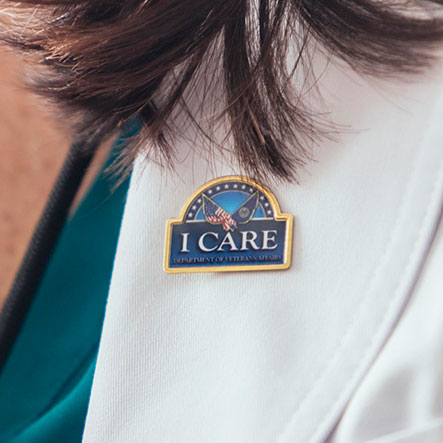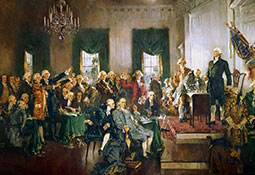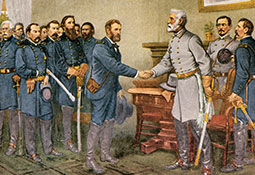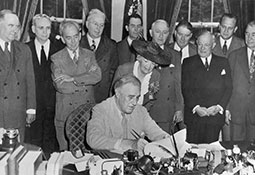People, Culture and Values
Showing How Much “ICARE”
Integrity, Commitment, Advocacy, Respect, and Excellence—these values are core to our mission and central to our culture. ICARE is what keeps us inspired and focused on doing our very best for Veterans and their families every day.
They provide a measure for the behavior standards expected of all VA employees, reminding us and others that “I CARE”:
- I care about those who have served.
- I care about my fellow VA employees.
- I care about choosing “the harder right instead of the easier wrong.”
- I care about performing my duties to the best of my abilities.

The History of VA
In the earliest days of our nation, people like us were already responding to the needs of Veterans. Here’s a timeline of the major events that shaped today’s VA.
1636
Plymouth Colonists paid the new world’s first disability claims to soldiers wounded during Pequot attacks.
1776
Continental Congress awarded pensions and land grants to Veterans who won our independence.

1811
Veterans aid was extended to widows and dependents.
1834
The federal government opened the first medical facility for Veterans.
1865
Nearly two million Veterans returned from the Civil War. Three bureaus emerged to serve their needs: The Bureau of Pensions, the National Soldier’s Homes and the National Battlefield Cemeteries.

1917
Congress expands benefits for Veterans to include insurance, disability compensation, rehabilitation and vocational training.
1930
President Hoover signed an executive order consolidating three bureaus—the Veterans Bureau, the Bureau of Pensions and the National Homes for Disabled Volunteer Soldiers—into a new federal agency. The Veterans Administration was born.
1944
President Roosevelt signed the landmark “GI Bill of Rights.” Sixteen million military members served in World War II, and VA was ready to help them return to a civilian life filled with new opportunities.

1989
After President Reagan elevated the Veterans Administration to Cabinet status in 1988, it was renamed the Department of Veterans Affairs.
1994
The VA Primary Care Directive mandated all VA facilities develop primary care programs. The percentage of patients receiving primary care at VA increased from 38% to 45% to 95% in 1993, 1996 and 1999 respectively.
2011
VA launched the Million Veteran Program (MVP), establishing one of the world’s largest medical databases of genetic information to drive future research for the advancement of Veteran health care.
![[LOGO] Million Veteran Program (MVP), Office of Research & Development.](/Content/Images/history-timeline-2011.jpg)
2018
The VA Video Connect application is released nationwide, allowing Veterans to interact with their health care providers live via computer, tablet or smartphone.